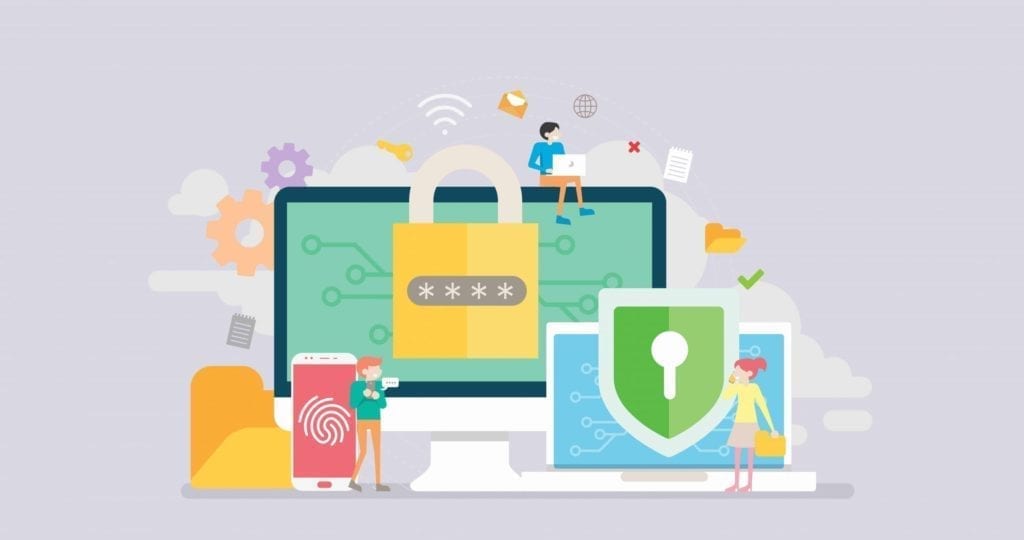Why Ransomware Victims Get Hit Twice – And How to Avoid It!
Ransomware Victims
The world of cybersecurity has been facing a relentless adversary: ransomware. This malicious software has been wreaking havoc across industries, encrypting valuable data and demanding ransoms for its release. The year 2022 saw an unprecedented rise in these attacks, and as we step into 2023, the threat continues to evolve.
Recent reports have highlighted an even more concerning trend: the alarming rate of repeat ransomware attacks. Organizations, thinking they’ve fortified their defenses after the first attack, are finding themselves targeted again, sometimes by the same ransomware actors.
Ransomware Landscape in 2022 and 2023
- In 2022, a significant number of businesses and institutions fell victim to a ransomware attack. The modus operandi often involved exploiting a vulnerability in the system, using malicious software to encrypt data, and then demanding a ransom.
- The year 2023 has seen the rise of new ransomware strains like Lockbit, which not only encrypts data but also threatens to release or has exfiltrated data if the victim doesn’t pay the ransom.
- Despite the increasing awareness and measures taken, many organizations still lack a comprehensive backup strategy, making them more vulnerable to these attacks.
- Recent research has shown that even after facing an attack, organizations are not immune. The attacker might have left behind a backdoor or the organization might be seen as an easy target, leading to repeat attacks.
- Paying the ransom doesn’t guarantee safety. In fact, it might make the organization a more attractive target for other ransomware actors. It’s always recommended to not pay a ransom and instead focus on preventive measures and having a robust backup system in place.
- The importance of understanding the ransomware landscape and being prepared cannot be stressed enough. With the continuous evolution of malware and attack strategies, staying updated and proactive is the key to defense.
Understanding the Ransomware Threat
Ransomware has been a persistent and evolving threat in the realm of cybersecurity. Its enduring nature is a testament to the adaptability and innovation of threat actors who continuously find new ways to exploit vulnerabilities and extort money from their victims.
The Evolution of Ransomware
- Over the years, especially since 2021, we’ve witnessed some of the biggest ransomware attacks in history. These attacks have not only grown in scale but also in sophistication.
- Modern ransomware doesn’t just encrypt data; it also threatens exfiltration, meaning the ransomware group might sell or leak the sensitive information if the ransom isn’t paid.
- The rise of ransomware-as-a-service offerings has democratized the ransomware landscape. Now, even less technically inclined cybercriminals can launch attacks, thanks to these services.
- Zero-day vulnerabilities are a goldmine for ransomware operators. These undisclosed software vulnerabilities, unknown to those who should be interested in mitigating them (like the software vendor), give hackers an open door to deploy their ransomware.
The Alarming Victim Count
- The number of ransomware victims has been on a steady rise. In December 2021 alone, companies like Acer and Kaseya were among the dozens that suffered a ransomware attack.
- The victim count isn’t just about numbers; it’s about the implications. A ransomware attack can lead to significant downtime, loss of sensitive data, and financial repercussions. The cost isn’t just the ransom payment; it’s also about data recovery, brand reputation, and potential legal implications.
- Recent statistics suggest that organizations globally are at a higher risk of a ransomware attack than ever before.
Implications of High Victim Count
- Ransomware gangs like BlackCat and AlphV have claimed responsibility for attacks that demanded tens of millions of dollars. Some organizations, despite the high stakes, didn’t pay the ransom, leading to data leaks and further complications.
- The incident response to a ransomware attack is crucial. Organizations need robust detection and response mechanisms to quickly mitigate the threat.
- A successful ransomware strategy by hackers often involves phishing campaigns to gain initial access, followed by encryption of data and then extortion. Organizations need to be prepared at every step, from employee education to having a reliable data backup system.
The Double Whammy: Why Victims Get Hit Twice
Ransomware attacks are a growing concern, but what’s even more alarming is the increasing number of ransomware victims who experience repeat attacks. This phenomenon, often referred to as the “double whammy,” underscores the evolving tactics of ransomware groups and the vulnerabilities that persist within organizations.
The Reality of Repeat Attacks
Statistics on Repeat Attacks
- In 2021, a significant number of organizations globally suffered a ransomware attack. But what’s even more concerning is that many of these organizations were hit by ransomware again within a short span. Reports indicate that some of the biggest ransomware attacks in 2022 were, in fact, second or third hits on the same targets.
- Ransomware gangs like BlackCat, AlphV, and nearly 90 ransomware groups have claimed responsibility for the attack on organizations that had previously paid a ransom. This indicates a potential list-sharing among ransomware operators targeting those who’ve shown a willingness to pay.
Potential Consequences of Repeat Attacks
- The aftermath of a ransomware attack can be devastating, with downtime, data recovery costs, and reputational damage. A repeat attack compounds these issues, often exploiting the same zero-day vulnerabilities or using information exfiltrated from the first attack.
- Organizations that have been hit by a ransomware attack once are perceived as vulnerable, making them attractive targets for other threat actors. The victim count is not just a statistic; it represents disrupted operations, financial losses, and a potential data breach.
Factors Putting Organizations at Risk
Inadequate Security Measures
- Many organizations still rely on outdated systems or fail to patch known vulnerabilities promptly. This lax approach provides an open door for ransomware groups to deploy their malicious software.
- Phishing remains one of the primary methods hackers use to gain initial access. Without proper training and awareness programs, employees can inadvertently become the weak link, allowing attackers to breach the organization’s defenses.
- The rise of downloadable ransomware and tools that allow even amateur cybercriminals to launch sophisticated attacks means that organizations need to be ever-vigilant.
Inadequate Incident Response and Neutralization
- A successful incident response strategy involves not just addressing the immediate threat but also understanding how the breach occurred and taking steps to prevent a recurrence.
- Many organizations, in their haste to resume operations, may not adequately investigate the breach, leaving systems that rely on compromised data or not fully neutralizing the threat. This oversight can pave the way for repeat attacks.
Implications of Paying a Ransom
- While the immediate reaction might be to pay the ransom to restore operations quickly, this decision can have long-term consequences. Paying a ransom can mark an organization as an easy target, leading to future attacks.
- Furthermore, there’s no guarantee that paying will result in the decryption of data. In some instances, organizations have paid only to find that the ransomware gang had no intention of providing a decryptor or that the decryption tool provided was ineffective.
The Role of Cyber Insurance
- While cyber insurance can provide financial relief in the aftermath of an attack, it can also inadvertently make organizations more attractive to ransomware operators. If ransomware groups believe that an insurance company will cover the ransom payment, they may be more inclined to target insured organizations.
Defending Against Ransomware
The rise in ransomware attacks has made it imperative for organizations to bolster their defenses. While the threat landscape is continuously evolving, so too are the methods and technologies available to defend against these malicious actors.
The Underestimation of Threat
Many organizations, despite being aware of the ransomware threat, often underestimate the severity and potential impact of an attack. This underestimation can stem from:
Organizations’ Perception of Their Preparedness
- A common misconception is believing that having basic security measures in place is sufficient. However, as recent ransomware attacks have shown, even major corporations with significant security budgets have fallen victim.
- The ransomware groups of today, including notorious ones like BlackCat and AlphV, are more sophisticated than ever. Their tactics have evolved, and they often exploit zero-day vulnerabilities to breach defenses.
Key Security Measures
To effectively combat the ransomware threat, organizations need to adopt a comprehensive and multi-faceted approach to security:
Importance of Multilayered Security Technologies
- Relying on a single security solution is no longer viable. Multilayered security technologies ensure that even if one layer is breached, others remain intact to thwart the attack.
- This approach involves a combination of perimeter defenses, internal monitoring, and rapid incident response mechanisms.
AI-Powered Email Protection
Phishing remains a primary method used by ransomware operators to gain initial access. AI-driven email protection can identify and block malicious emails, reducing the risk of a successful phishing attempt.
Zero Trust Access
The principle of Zero Trust dictates that no one, regardless of their position within the organization, is trusted by default. Every access request is fully authenticated, authorized, and encrypted before granting access.
Application Security
Ensuring that all applications, especially those exposed to the internet, are secure is crucial. Regular patching and updates, combined with monitoring for unusual activity, can prevent many ransomware attacks.
Threat Hunting and Extended Detection and Response (XDR) Capabilities
Proactive threat hunting involves searching for signs of malicious activity that might have gone unnoticed. Coupled with XDR, which provides a holistic view of potential threats across various endpoints, organizations can rapidly detect and neutralize threats.
What People Also Ask
Why do some organizations get hit by ransomware more than once?
Some organizations become targets for repeat attacks due to several reasons. They might have paid the ransom during the first attack, marking them as a lucrative target for ransomware groups. Additionally, if the initial breach’s root cause isn’t addressed, threat actors can exploit the same vulnerabilities. Lastly, inadequate incident response can leave backdoors open for hackers to re-enter the network.
How do ransomware attackers gain access to an organization’s network?
Ransomware attackers primarily use phishing campaigns to trick employees into revealing credentials or downloading malicious software. They also exploit zero-day vulnerabilities in software that organizations use. Once inside, they move laterally, escalating privileges until they can deploy their ransomware.
What role does cyber insurance play in ransomware attacks?
Cyber insurance can offer financial relief to organizations after a ransomware attack. However, it’s a double-edged sword. Knowing that an insurance policy might cover the ransom payment, ransomware gangs might be more inclined to target insured organizations. Furthermore, paying ransoms, even through insurance, can fund and encourage ransomware operators to continue their malicious activities.
How can organizations better defend themselves against repeat ransomware attacks?
Organizations should adopt a multi-layered defense strategy, emphasizing continuous monitoring, timely patching of software, and regular data backups. Employee training to recognize and avoid phishing attempts is crucial. Implementing advanced security measures like AI-powered email protection, Zero Trust access, and robust incident response plans can significantly reduce the risk.
Conclusion
The ransomware threat landscape is continuously evolving, with ransomware groups employing more sophisticated tactics. The year 2021 saw some of the biggest ransomware attacks, and the trend continued into 2022. Organizations globally, regardless of size or industry, are potential targets.
It’s imperative for organizations to recognize the gravity of the threat and take proactive measures. Relying on outdated security practices or underestimating the threat can have dire consequences. Instead, organizations should invest in advanced security technologies and prioritize continuous education and awareness among their staff.
The fight against ransomware is ongoing, but with collective effort, awareness, and the right tools in place, organizations can safeguard their assets and data against these malicious threats.












